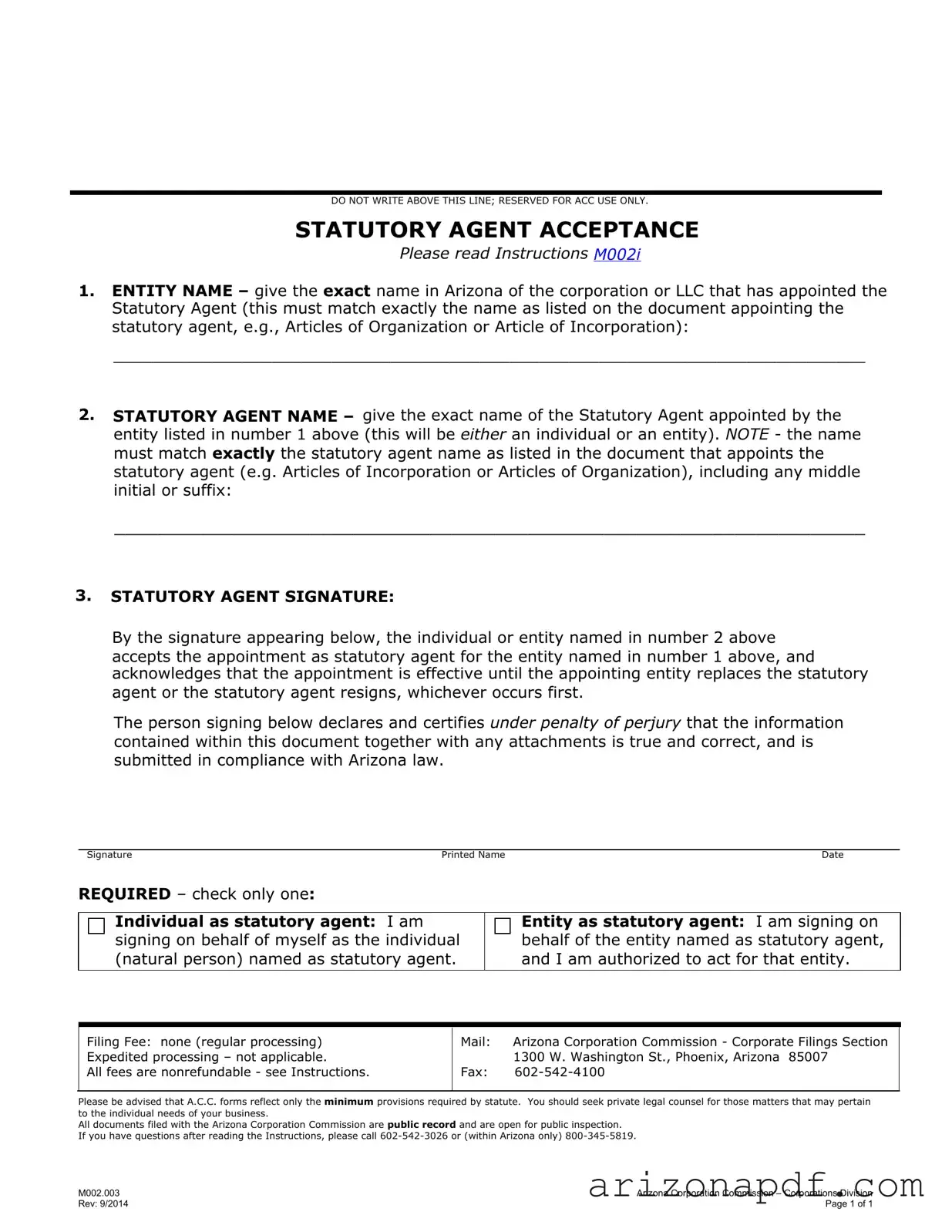The Arizona Agent form, specifically for Statutory Agent Acceptance, has similarities with various other legal documents that delineate roles, responsibilities, and the importance of accurate, truthful information. An example of such a document is the Power of Attorney (POA). Both the Statutory Agent Acceptance form and a Power of Attorney empower an individual or entity to act on behalf of another. While the Statutory Agent acts primarily for legal document receipt and representation in the state, a POA can grant broader powers, including financial decisions and personal affairs management. Both documents require precise identification of the parties involved and legally bind the appointee to act in the best interest of the appointer.
Another analogous document is the Articles of Incorporation, used when establishing a corporation. Similar to the Statutory Agent Acceptance form, which identifies the agent for a corporation or LLC in Arizona, Articles of Incorporation outline the primary facts about a new corporation, including its name, purpose, and the names of its initial directors. Both documents serve as foundational business records and must be filed with state authorities to ensure legal recognition and operation within state laws.
The Operating Agreement for LLCs also shares commonalities with the Arizona Agent form. It details the operational and financial decisions of a limited liability company and its members, much like how the Statutory Agent form specifies who will act as the statutory agent. While the Operating Agreement governs the internal workings of an LLC, the Agent form facilitates external interactions, specifically with the state, by designating an agent for service of process.
Financial documents, such as a Corporate Resolution, bear resemblance to the Arizona Agent form, as both involve formal decision-making and the recording of those decisions. A Corporate Resolution might be used to authorize the opening of a bank account or the sale of shares, requiring specific approvals and documentation. This parallels the Statutory Agent Acceptance form's function of officially designating an agent, through signed acknowledgment, under company authorization.
The Non-Disclosure Agreement (NDA) is another type of document that, while fundamentally different in purpose — protecting confidential information — aligns with the statutory agent form in its emphasis on formal agreement and specific identification of parties. Both documents are legal commitments with significant implications for non-compliance, underscoring the importance of clear, accurate information and understanding of roles.
The Employment Agreement, which outlines terms of employment, roles, and responsibilities between an employee and employer, also shares commonalities with the Statutory Agent Acceptance. Both necessitate clear identification of parties involved and their mutual consent. While one focuses on employment terms, the other establishes legal representation for service of process, both are foundational to the respective relationships they outline.
Lastly, the Shareholder Agreement among shareholders in a corporation is somewhat similar to the Arizona Agent form. It specifies the rights, responsibilities, and protections of shareholders, just as the Statutory Agent form specifies the agent's role for a corporation or LLC. Each document helps define critical aspects of a business's structure and governance, ensuring clarity and legal compliance in their respective domains.

